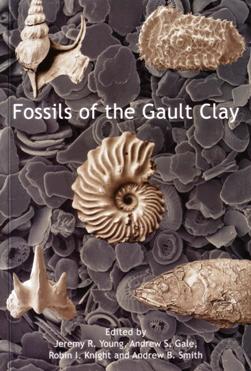Jeremy R. Young, Andrew S. Gale, Robin I. White & Andrew B. Smith (eds); Published by: The Palaeontological Association; Publication date: 2010; ISBN: 978-1-4443-3542-2; List price: £18.00; 342 pp, 57 plates.
www.palass.org

Hundreds of budding geologists in the southeast of England (including this reviewer) must have cut their teeth on the Gault Clay at Folkestone, and will have cried out for an identification manual as clear and comprehensive as this. The book is number 12 in the series produced by the Palaeontological Association on the fossils of some of Britain’s most collectable deposits, and PalAss is to be congratulated on its continuing commitment to this series.
The book, while perhaps aimed mainly at collectors (who will find it an invaluable identification guide), is also a key reference work for those interested in the ecology and systematics of this abundant Cretaceous fauna. It is comprehensive, covering all the taxonomic groups likely to be found in the Gault (including the more specialist areas of bioimmuration, bioclaustrations and bioerosive trace fossils), and ranging from calcareous nannofossils to reptiles. The quality of the black-and-white photographs is excellent, and highlights the care with which the book has been produced. Importantly, given that it is likely to be well thumbed, the book has a high-quality binding that will withstand prolonged heavy use.
The book is more than an identification guide. As well as helpful introductory material on the Gault Clay it provides very useful guidance on sample preparation for microfossils, including vertebrate teeth and other elements, and on macrofaunal ecological associations found in the Gault. It may also stimulate renewed interest in the Gault among collectors, perhaps leading to new information on some of the less well-known groups, such as bryozoa. Most chapters clearly indicate that only the most common species are described, thereby avoiding the trap of implying that all species likely to be found in the Gault are illustrated. The extensive reference list provides the reader with a way into the more extensive historic literature, which will assist those looking to identify the rarer components of the fauna.
Perhaps the only disappointment is the lack of guidance on curation and preservation, especially the notoriously pyrite-rot-prone nature of many ammonites on which some advice would have been welcome. However this minor omission should not detract from the value of this impressive book to amateur and professional palaeontologists alike.
Reviewed by Keith Duff,
Stamford